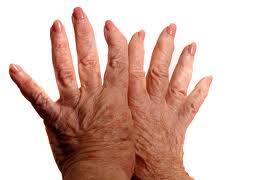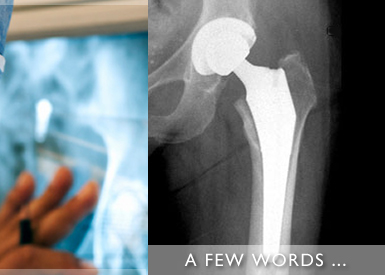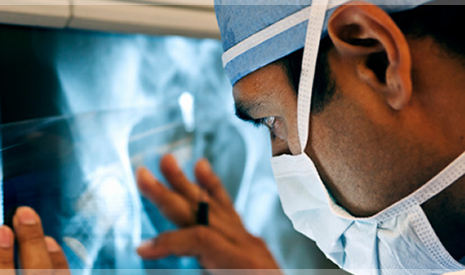
Become familiar with your joint anatomy. You may find it helpful to understand your joint anatomy and read answers to common questions.
The following offers a summary of information about arthritis.
WHAT IS ARTHRITIS?
Arthritis is the number one cause of chronic disability in the UK. Affecting millions it refers to more than 100 diseases that cause pain, stiffness and swelling from the inflammation of a joint or the area around joints.
WHAT IS OSTEOARTHRITIS?
Osteoarthritis is the most common type of arthritis affecting usually middle-aged and older people. This is a noninflammatory degenerative joint disease characterized by the breakdown of the joint's cartilage. The exact cause of osteoarthritis is unknown.
WHAT IS FIBROMYALGIA?
Fibromyalgia is the second most common type of arthritis affecting mostly women; 70 to 90 percent of people who develop this disease are women aged 20 to 50. Fibromyalgia is a disease involving pain in muscles or joints with no clinical signs of infection. It is often misdiagnosed as chronic fatigue syndrome, and usually does not require surgery.
WHAT IS RHEUMATOID ARTHRITIS?
In some types of arthritis, such as rheumatoid arthritis, the synovium becomes inflamed. This inflammation causes chemicals to be released that thicken the synovium and damage the cartilage and bone of the affected joint. This leads to inflammation of the synovium causing pain and swelling.
WHAT CAUSES ARTHRITIS?
The causes of the 100 types of arthritis are unknown. Because there are so many different forms of arthritis, the causes are likely to vary. Scientists are currently examining how the roles of major factors including genetics and lifestyles affect the development of arthritis.
WHAT CHANGES OCCUR IN THE CARTILAGE OF AN ARTHRITIC HIP?
In a healthy hip, cartilage cushions the area surrounding the hip ball and socket to allow easy movement without pain. In an unhealthy hip, the cartilage is damaged or worn away causing pain from bones rubbing and grinding together.
WHAT CHANGES OCCUR IN THE CARTILAGE OF AN ARTHRITIC KNEE?
In a healthy knee, cartilage protects and cushions bone surfaces that come together at the joint allowing bones to move without friction. In an unhealthy knee, cartilage is damaged or worn away causing pain from bones rubbing together.
WHAT ARE SOME OF THE SYMPTOMS OF ARTHRITIS?
Pain from arthritis can be continuous or intermittent. Pain may occur after activity or exercise but it may also happen even if you've been resting and still for a period of time. Pain may be concentrated in one spot or you may feel it all over your body. Joints may feel stiff and difficult to move. Daily chores such as climbing stairs and opening cans may become a challenge. You may notice that pain is more severe during certain times of the day or after performing certain tasks.
Some kinds of arthritis cause swelling or inflammation. The skin over the joint may appear swollen and red, and feel hot when touched. Arthritis may also cause fatigue.
HOW CAN I KNOW IF I HAVE ARTHRITIS?
Early diagnosis and treatment tailored to an individual's needs are crucial in slowing or preventing damage to joints. Only a doctor can determine if you have arthritis and what type it is. Arthritis is diagnosed based on the overall pattern of symptoms, medical history, physical exam, x-rays and lab tests.
WHAT ARE THE TREATMENT OPTIONS FOR ARTHRITIS?
Because there are so many types of arthritis, each type of arthritis has different symptoms and treatments. The good news is that many things work to help control arthritis. Care for arthritis often involves more than one type of treatment. Treatment may vary over time and may be different depending on the kind of arthritis. Consult your doctor to discuss the best treatment options for you.
MEDICATION: Many drugs, both prescriptions and over-the-counter medications, are used to treat arthritis. Common medications are aspirin-free pain relievers, anti-inflammatory drugs, corticosteroids, disease modifiers, and sleep medications.
EXERCISE: Regular exercise is important to keep the body moving and flexible. It helps to lessen pain, increase movement, reduce fatigue, and helps you look and feel better.
HEAT OR COLD: Use of heat or cold over joints may provide short- term relief from pain and stiffness.
PACING ACTIVITIES: Pacing helps protect your joints by alternating periods of activity with periods of rest so that your joints don't tire from the stress of repeated tasks.
JOINT PROTECTION: Joints can be protected by learning to use them in ways that avoid excess stress. One way of doing this is to avoid using sore and weak joints. Unless larger joints are sore, for example, it is best to use them when carrying heavy items. The second method is walking with assisting devices like a cane. Lastly, weight control helps ease pain by reducing stress on your joints.
SELF-HELP SKILLS: You can learn ways to better manage how arthritis affects you emotionally by talking about your feelings with family members and friends, doing mental exercises, and by joining your local arthritis support group.
SURGERY: Most people will not need surgery, but in severe cases surgery may be effective in eliminating pain when other treatment methods have failed.
The Arthritis Association (www.arthriticassociation.org.uk/) and NHS Direct encyclopaedia (www.nhsdirect.nhs.uk/help/) web sites contain many articles and patient education information that you may find helpful as well.
|



